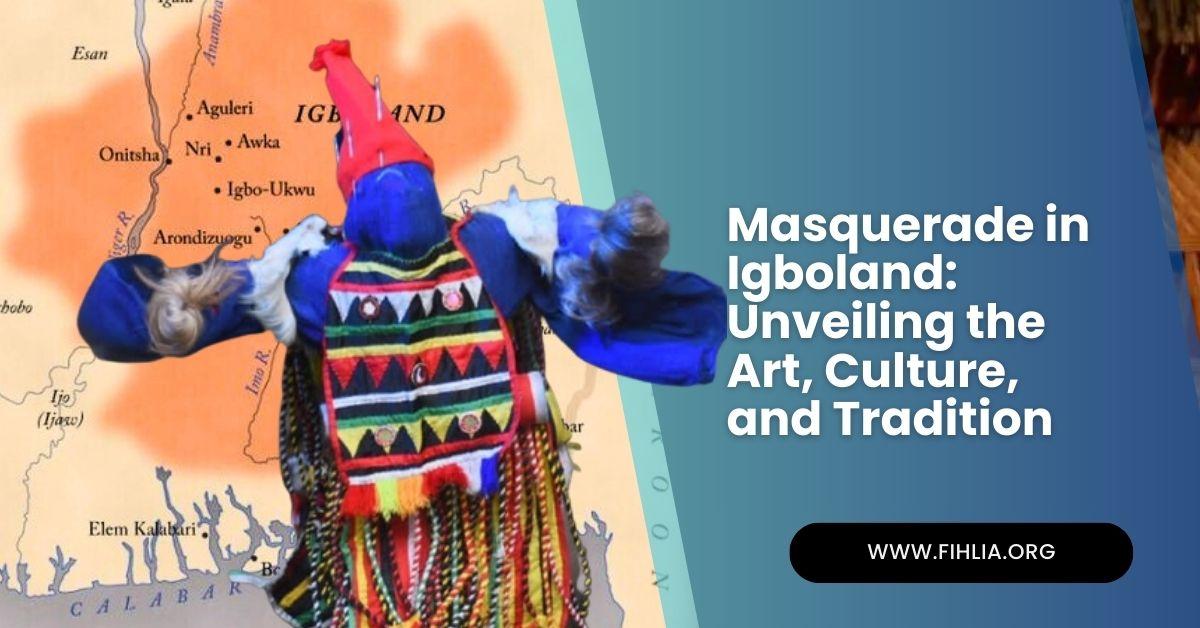In the vibrant tapestry of Igbo culture, the art of masking stands as one of its most captivating and enduring expressions. Intricately linked with traditional music and religion, masquerades hold a special place in the hearts of the Igbo people. In this article, we delve into the world of Igbo masquerades, exploring their diverse forms, cultural significance, and the pivotal role they play in Igbo society.
Crafting the Mask: A Fusion of Materials and Artistry
Igbo masks come to life through a fusion of materials and artistic skill. These masks can be crafted from various materials, including wood, fabric, iron, raffia, and vegetation. The combination of these elements gives birth to masks of striking beauty and cultural significance. Each mask is a testament to the craftsmanship and creativity of Igbo artisans.
The Many Faces of Masquerades: A Diverse Range of Uses
Masquerades in Igbo culture serve a multitude of purposes, each deeply rooted in tradition and symbolism. They find their place in various facets of Igbo life, including:
1. Social Satires:
Masquerades are often used as a means of social commentary, providing a platform for satire and critique of societal norms and behaviors.
2. Religious Rituals:
They hold a sacred role in religious ceremonies, acting as intermediaries between the physical and spiritual realms. Masquerades are a common sight during religious rituals and ceremonies.
3. Secret Society Initiations:
Certain masquerades play a central role in secret society initiations, such as the Ekpe, iba mmonwu, amanwulu society, and akwam ozu (burial ceremony). These ceremonies are shrouded in mystery and tradition, with masquerades serving as key participants.
4. Cultural Celebrations:
Masquerades are an integral part of cultural celebrations, including iri ji ohuu (new yam festival) and public festivals. Notably, they have found a place in Christmas celebrations, and the ‘Imoka’ festival celebrated by the Awka people is a testament to the adaptability of this tradition.
The Diversity of Masquerades: Reflecting Unique Cultures
One of the most captivating aspects of Igbo masquerades is their diversity. Each masquerade is uniquely designed to reflect the cultural nuances and interests of its respective community. Some noteworthy examples include:
- Agbogho Mmuo (Maiden Spirit) Masks: Found in Northern Igbo regions, these masks symbolize the spirits of deceased maidens and their mothers. They are adorned with masks that epitomize beauty and grace.
- Izaga Masks: These towering masquerades can reach heights of 12 to 25 feet and feature tiny wooden legs, creating an awe-inspiring sight. They are often associated with specific rituals and ceremonies.
- Awka Masquerades: The Awka community boasts a rich masquerade tradition, including the Iga, Ayolo, and ukwuaju masks, prominently seen during the ‘Egwu Imo Awka’ festival. Additionally, special masks like Okwo mma, Agaba, Idu, Oshiashili, and Ijele are reserved for significant events, such as the passing of prominent figures in the community.
Preservation and Continuity: The Role of Masquerades
Masquerades not only serve as cultural treasures but also play a crucial role in ensuring the continuity and well-being of Igbo communities. They serve as a bridge between generations, carrying forward age-old traditions and passing on cultural values.
In conclusion, Igbo masquerades are not mere artistic creations; they are living embodiments of culture, tradition, and spirituality. With their vibrant diversity and multifaceted roles, masquerades continue to be a source of pride and identity for the Igbo people, keeping the flame of their heritage burning brightly for generations to come.

